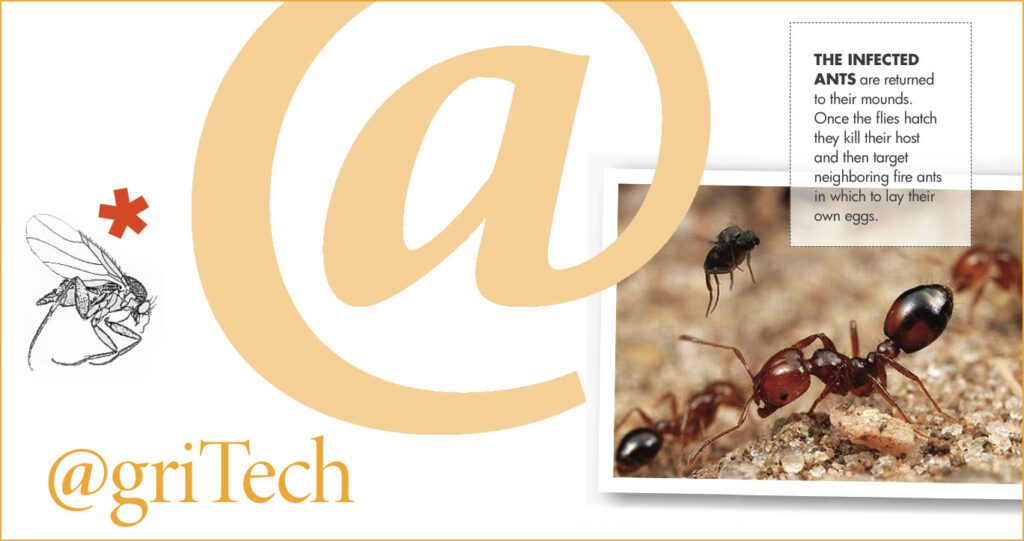There is a costly import from Brazil that Floridians don’t want or need: the fire ant. Fire ants were unintentionally imported to America along with other valued cargo in the 1930s. Since that time, fire ants have become their own kind of mini-terror network, spreading their venom to humans, animals, and reptiles in at least 14 states. The invasive species is a threat and an inconvenience because of their poisonous sting, but also because they seem to be drawn to electrical systems and are reported to cause havoc with public utilities, and outdoor heating and cooling units.
To combat the unwelcome mini-terrorists, the U.S. Department of Agriculture’s (USDA) Imported Fire Ant and Household Insects Research Unit in Gainesville, Fla., has developed a biological weapon, of sorts. Species-specific flies that target only fire ants, and, more specifically only certain types of fire ants within colonies, have been used very selectively to infest local fire ant mounds.
The process relies on partnerships with many local UF Institute of Food and Agricultural Sciences County Extension offices. Extension workers collect live samples of ants from various fire ant mounds in their catchment areas. Those ants are shipped to Gainesville, where the USDA workers infect the ants with parasitic phorid flies (Pseudacteon obtusus) larvae. The infected ants are returned to their mounds. Once the flies hatch, they kill their host and then target neighboring fire ants in which to lay their own eggs.
Bridget Carlisle, Extension Agent for Livestock at the UF/IFAS Polk County Extension, says, “It’s like an alien invasion of infected ants into their own colony.” Carlisle says the program has been operational since the late 1990s. The partnership between the USDA and local counties is fundamental to the success of the program because the USDA needs to infest as many fire ant mounds as possible across wide geographic territories.
“The livestock pastures provide an ideal location for the cultivation of flies because they are generally an undisturbed area where no chemical or pollutants are used,” observes Carlisle.
The USDA has conducted field studies to ensure that the program succeeds without any negative consequences or collateral effects. Using flies that target only the invasive species is one key to the controlled nature of the effort. Efforts to minimize the number of fire ants are intended to provide relief for the negative economic and biological impacts the fire ants pose to Florida.
CREDIT
story by MICHAEL JAMES SELF, Ed.D.

